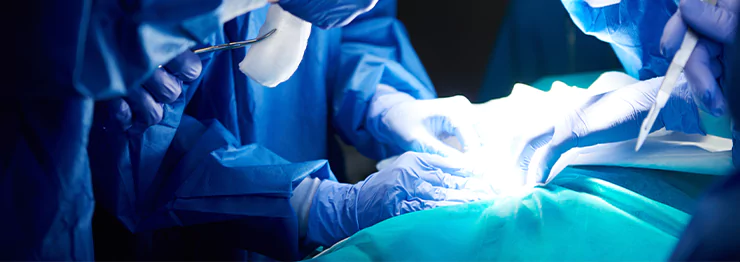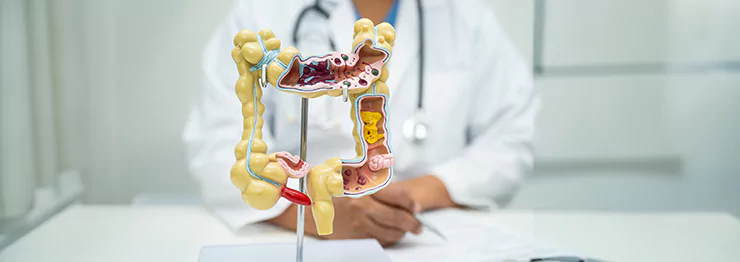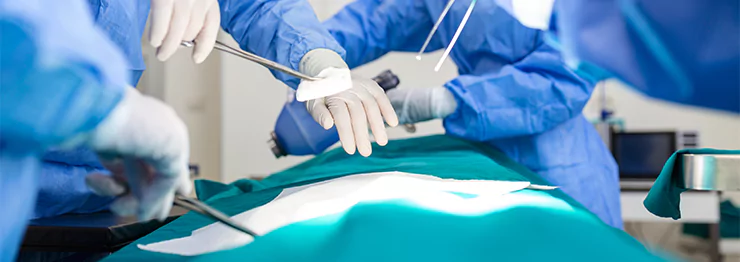Manipal Hospitals is a leading and trusted healthcare provider in Kolkata, with four state-of-the-art facilities strategically located across the city: Dhakuria, Broadway, Salt Lake, and Mukundapur. We are dedicated to providing comprehensive, world-class surgical care.
Our expert team of general surgeons, utilizing advanced technology, achieves excellent outcomes in a wide range of procedures, from minimally invasive laparoscopic surgeries to complex open surgeries. We are committed to setting the standard for surgical excellence in Kolkata. Focusing on personalized, patient-centered care, Manipal Hospitals combines quality, compassion, and innovation, making us a preferred choice for surgical needs in the region.
70+
Years of Experience
37
Hospitals
5600+
Doctors
10500+
Beds
19
Serving Cities
45+
Million Lives Touched
Biopsy
Laparoscopic cholecystectom
Laparoscopic appendectomy
Fistula
Hernia
Hartman's Procedur

A biopsy is a medical procedure to collect tissue or cell samples for lab testing. Doctors often recommend it when they suspect cancer or another condition. Biopsy can be done with a special needle, inserting it through the skin to extract fluid, cells, or tissue from a suspected mass. It can also be done via an endoscope (a thin, flexible tube with a camera) to access and remove tissue from a suspicious area within the body. The collected tissue sample is then sent to a lab for histological analysis to confirm a diagnosis.

Laparoscopic gallbladder removal is a minimally invasive procedure to remove a diseased gallbladder. The gallbladder, a small organ near the liver, stores bile. Removal may be necessary for conditions like gallstones, chronic cholecystitis, or gallbladder cancer, especially if it severely impacts quality of life. This common procedure uses a laparoscope and small incisions, minimizing trauma, pain, and recovery time.

The appendix, a small, finger-shaped organ attached to the large intestine in the lower right abdomen, has no known function. It's prone to inflammation (appendicitis), which requires removal. Untreated appendicitis can lead to a ruptured appendix and serious infection (peritonitis). An appendectomy removes the inflamed appendix. Laparoscopic appendectomy is a minimally invasive approach using small incisions.

An anal fistula is a small tunnel connecting the inside of the anus to the surrounding skin. It often begins with an infected gland, leading to an abscess (a pus-filled swelling). When the abscess drains, it can form a fistula. Treatment usually requires surgery, such as a fistulotomy, which opens the fistula to promote healing.

A hernia occurs when a weakness in the abdominal wall causes certain organs to push through the muscle or tissue covering it. This pushes the organ (usually fatty tissue or intestine) into an area where it shouldn't be, creating a bulge under the skin near the belly or groin. Doctors perform the hernia repair surgery to push the hernia back into its original place either through open surgery or through a laparoscopic approach.

Hartmann's procedure, also known as proctosigmoidectomy, is a surgical operation performed on the large intestine (colon). Specifically, it is a type of colectomy, where a portion of the colon is removed. This procedure involves removing the sigmoid colon, the final section of the colon before it connects to the rectum, and sometimes a portion of the rectum as well. The sigmoid colon and rectum are where waste material is prepared for elimination from the body, and Hartmann's procedure alters this process.
Biopsy

A biopsy is a medical procedure to collect tissue or cell samples for lab testing. Doctors often recommend it when they suspect cancer or another condition. Biopsy can be done with a special needle, inserting it through the skin to extract fluid, cells, or tissue from a suspected mass. It can also be done via an endoscope (a thin, flexible tube with a camera) to access and remove tissue from a suspicious area within the body. The collected tissue sample is then sent to a lab for histological analysis to confirm a diagnosis.
Laparoscopic cholecystectomy

Laparoscopic gallbladder removal is a minimally invasive procedure to remove a diseased gallbladder. The gallbladder, a small organ near the liver, stores bile. Removal may be necessary for conditions like gallstones, chronic cholecystitis, or gallbladder cancer, especially if it severely impacts quality of life. This common procedure uses a laparoscope and small incisions, minimizing trauma, pain, and recovery time.
Laparoscopic appendectomy

The appendix, a small, finger-shaped organ attached to the large intestine in the lower right abdomen, has no known function. It's prone to inflammation (appendicitis), which requires removal. Untreated appendicitis can lead to a ruptured appendix and serious infection (peritonitis). An appendectomy removes the inflamed appendix. Laparoscopic appendectomy is a minimally invasive approach using small incisions.
Fistula

An anal fistula is a small tunnel connecting the inside of the anus to the surrounding skin. It often begins with an infected gland, leading to an abscess (a pus-filled swelling). When the abscess drains, it can form a fistula. Treatment usually requires surgery, such as a fistulotomy, which opens the fistula to promote healing.
Hernia

A hernia occurs when a weakness in the abdominal wall causes certain organs to push through the muscle or tissue covering it. This pushes the organ (usually fatty tissue or intestine) into an area where it shouldn't be, creating a bulge under the skin near the belly or groin. Doctors perform the hernia repair surgery to push the hernia back into its original place either through open surgery or through a laparoscopic approach.
Hartman's Procedure

Hartmann's procedure, also known as proctosigmoidectomy, is a surgical operation performed on the large intestine (colon). Specifically, it is a type of colectomy, where a portion of the colon is removed. This procedure involves removing the sigmoid colon, the final section of the colon before it connects to the rectum, and sometimes a portion of the rectum as well. The sigmoid colon and rectum are where waste material is prepared for elimination from the body, and Hartmann's procedure alters this process.
